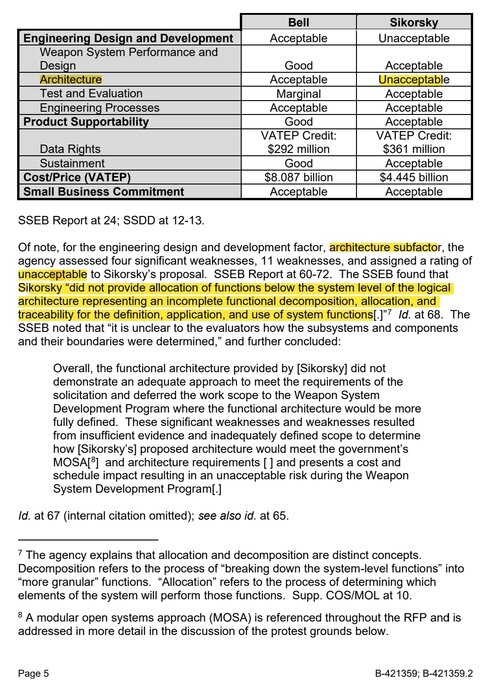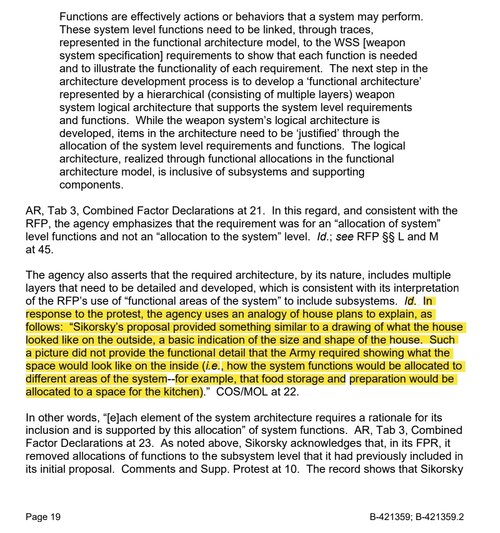MURPHY: “Thank you very much, Mr. Chairman. Thank you both for being here today. Mr. Chairman, I wanted to take my time to ask a few questions about the Future Vertical Lift Program. First of all, this is the first opportunity to talk about this in this subcommittee. Mr. Chairman, as you know, I made, along with Senator Blumenthal, a series of requests of the Army to get a briefing on a FLRAA award and was denied that briefing by the Army multiple times.
“I think this subcommittee, and more broadly the Appropriations [Committee], has to pretty rigorously guard our equities when it comes to getting information from the Army and from the administration when it comes to contract awards. In fact, the regulations governing the awarding of contracts carves out a very specific role for Congress to be briefed on these matters even while the award is pending. And I hope this committee will continue to work on what I think is a misaligned equilibrium right now between the administration, the Department of Defense, and this committee when it comes to how much information is shared.
“Ms. Wormuth, I wanted to talk to you about this specific award. I understand I have parochial interests, right. This was a contest between Bell Textron and Sikorsky and the award went to the Bell program. But I guess I want to talk to you a little bit about my concerns regarding tiltrotor aircraft. My understanding is that past performance did not factor into the contract award, and this committee is going to be charged with picking up the full cost of this new program. Tiltrotor aircraft, like the V-22 Osprey, have a pretty miserable performance, reliability, and safety record over the last 30 years. The V-22 is supposed to have a mission readiness of 82%, but over the last five years, the Osprey has been at 56%. The procurement cost went from 33 million to almost 100 million [per aircraft]. Today, the cost per flight of the V-22 is $10,000 an hour, which is double the initial estimate.
“What was interesting about this particular contract award is that the bid that came in from Textron was twice, twice the amount of the bid that came in from Sikorsky. Layer on top of that, this history suggesting that a tiltrotor is going to end up costing our taxpayers inordinately more than even the initial bids. And I worry that we're going to have a hard time being able to fund the full cost of this award.
“So I guess my question is, do you have any information as to why the Army did not take past performance of tiltrotor aircraft into account when awarding the FLRAA contract? And what do you say about my concerns that if the cost curve on this new helicopter, which is obviously a foundational program for the Army, is anything like what we saw for the Osprey that, then we're in for some pretty big, unexpected costs that we're going to have to bear on this subcommittee?”
WORMUTH: “Senator Murphy, first of all, I want to say, you know, of course, I completely support and value the important oversight role of Congress in these matters. So we want to be good partners with you in terms of being transparent. And if you have not already received a detailed briefing now that the GAO has issued its decision, if you will, on the competition, I certainly will make sure that Mr. Doug Bush and their team get up to talk with you about that.
“My understanding is that the things that were valued or emphasized, if you will, in the selection process did include looking at lower technical risk, precisely because of the fact that in the past if the technical risk is higher, a lot of times that means the costs in the out years are higher. The sustainment costs can be higher because they're not appropriately baked into the competitive process. So one of the reasons, as I understand it, that we selected the Bell Textron aircraft was because it was assessed to have lower technical risk, even though the bid that came in from Sikorsky from an overall dollar amount was lower. You know, it was a best value competition. It wasn't strictly based on price. And we in the Army had some considerable concerns about our visibility into the design process that came from Sikorsky. So I can get back to you in more detail in terms of how exactly we incorporated past performance of the Osprey into the calculations. But we absolutely emphasize the importance of having lower technical risk in the program.
MURPHY: “Mr. Chairman, I will just note that our subcommittee has a GAO report on this very specific question of whether risk is being properly calculated when awarding programs within the Future Vertical Lift aircraft process. And what this GAO report comes to the conclusion is that right now, the Army is not properly identifying long term risk on these programs. And so look forward to being in a dialogue about some of the recommendations in this GAO report and getting a better, holistic sense of how much this is going to cost the taxpayer in the long run. Thank you very much.”






